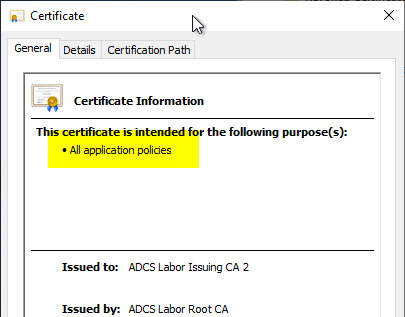With Windows Server 2008 R2 and Windows 7, a new functionality for certificate enrollment has been introduced: The Certificate Enrollment Web Services, which are mapped by two server roles:
- Certificate Enrollment Policy Web Service (CEP)
- Certificate Enrollment Web Services (CES)
The following is a description of the background to these roles, how they work, and the possible deployment scenarios.
Continue reading „Grundlagen Zertifikatbeantragung über Certificate Enrollment Web Services (CEP, CES) mit den Protokollen MS-XCEP und MS-WSTEP“